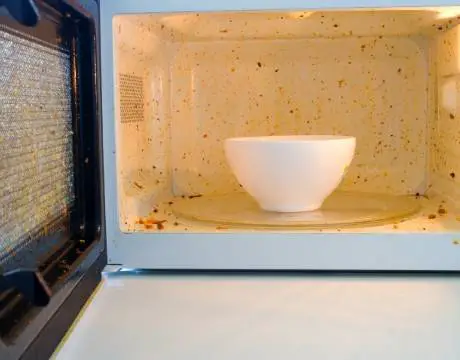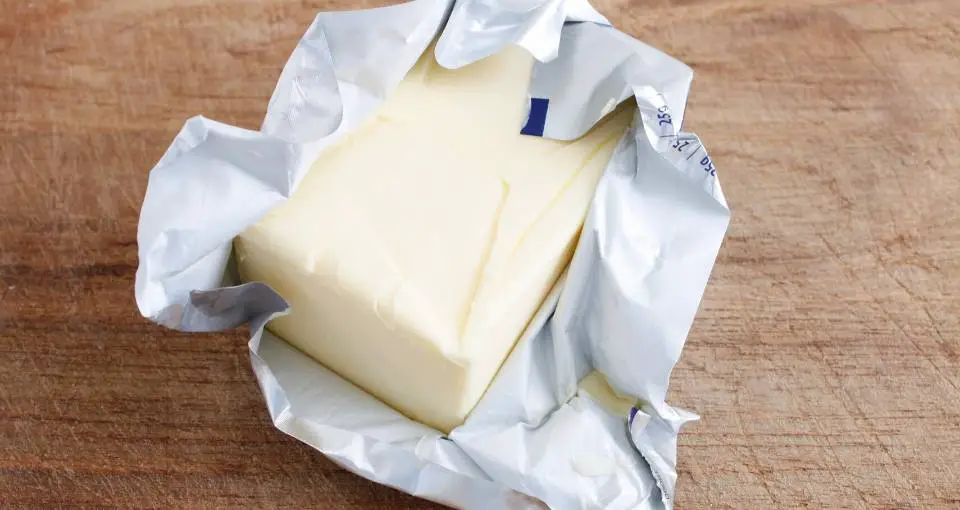After cleaning up the inside of a microwave that was riddled with butter spots. I wondered if this was the best way to soften a fresh stick of butter? So I looked for a good answer to make sure.
Microwaving butter in order to melt or soften the butter. Can lead to the butter rapidly heating and splattering. Creating a mess within the microwave.
Let’s look into what causes this and how you can prevent it.
I have ran into the problem of having a cold stick of butter that you can’t spread onto bread before. After numerous occasions of this I wanted to find a solution.
Here is how to smartly melt butter using a microwave. Also ways to achieve softened butter without a microwave.
Why Butter Explodes In The Microwave

Butter usually explodes in the microwave due to the separation of the fats and the water content within the butter. The water tends to heat faster than the fats and has trouble expanding causing splattering.
Butter actually absorbs heat very well in the microwave. Having little trouble becoming hot.
This is happening because of overheating. Microwave can heat food very quickly hence the convenience, but it makes it easy to overheat butter.
Butter also has a tendency to heat unevenly. Sometimes the inside of the butter heats before the outside. Causing steam to be trapped within the butter and this can lead to an eruption.
The main reason your butter is exploding in the microwave is because it is heating up too much too quickly.
This tends to be the most common cause of microwave and butter disasters. There is a couple solutions and methods to softening or melting butter More safely.
Why Does My Butter Splatter
There are two possible reasons why your butter is splattering in the microwave. One reason which I covered is that the microwave is too hot.
The next reason may have to do with the butter itself. Not all store brand butters are created equal. Some types of butters may have less fat and more water.
This is where the problem starts, butters with more moisture content may splatter more than a butter with higher fat.
Any butter that is 80 to 85% butter fat has very low moisture. When you have a butter with less water the chances of splattering are decreased.
No matter what kind of butter you are using there are still ways you can prevent the mess in your microwave.
How To Microwave Butter Cleanly
One way to microwave butter without causing a filthy mess. Is to change the power setting on your microwave.
Typically the default setting is going to be too hot. Again the rapid fast heating of the microwave is what causes butter to explode.
So the next time before you want to mail or soften butter. Turn the power setting on your microwave lower.
To change the power level on a microwave you typically enter the cooking time first. Then adjust the power level for starting the microwave.
Power level usually ranges from 1 to 10. Typically 10 is the default setting and is the highest.
Soft Butter vs Melted

Butter softness is determined by how easily it is spreadable. You should be able to run a knife completely through it. Softened butter close to room temperature. Ready to be used on bread and melts quickly in small portions.
Melted butter is when it has turned into a liquid. You should be able to pour the butter. Certain baking recipes may call for melted butter. It is also commonly used over popcorn.
Soften Butter
When softening butter use the lowest setting. Which is level one. Still keep an eye out on the butter as it’s in the microwave. It shouldn’t take more than 1 minute.
Power level one on most microwaves is also what is used for defrost. So you could use the defrost setting, but most microwaves ask for the weight of the meat you are defrosting.
Don’t worry about what weight you put in because this only affects the amount of time the microwave defrosts.
So if you are just trying to soften butter just enter the lowest weight. This could be either 1 lb or 0.1. The heavier the weight you enter the longer the defrost will run. By using a lower number you lessen the risk of overheating the butter.
You can soften butter in a butter dish in the microwave, just leave the butter uncovered. Make sure obviously the dish is microwave safe, porcelain or glass dishes will work.
Take the dishes lid off so you can see the butter. Also this allows you to feel the butter with a knife, without having to remove the lid.
Melting Butter
You can use a higher power level when melting butter. Power level three or four works pretty well. still it’s not going to take very long and you should keep an eye on it.
Melt butter in a bowl so you can catch the liquid. It also allows you to stir it as you melt. You can frequently pause the microwave, stir the butter and then continue to melt. Until the butter has reached the desired melted level.
When melting it butter in a bowl. It is important to cover the top of the bowl. You can use a paper towel or napkin to do this. That way a towel catches any splattering. The wrapper that the butter comes in can also be used.
Smart Ways To Soften Butter
Perhaps the smartest way to soften butter is to do it at room temperature. This can take up to 1 hour. Depending on the room temperature.
In a warmer room could be as little as half an hour.
You can also slice the butter stick up into pieces. Then let that sit out at room temperature. This will speed up the process even more.
Another trick would be to heat the butter dish’s lid. Then cover the butter for a few minutes with the warm lid. You can do this by heating it up with hot water.
Conclusion
The reason most don’t recommend using a microwave for butter is because. Butter heats very quickly and can get out of control.
The best ways to prevent this is to know your microwave settings. Use a lower power level for melting and softening butter.
Check to see if you can buy a different butter. One with a lower moisture content. Remember to leave a stick of butter out, with enough time to soften before your meal.

